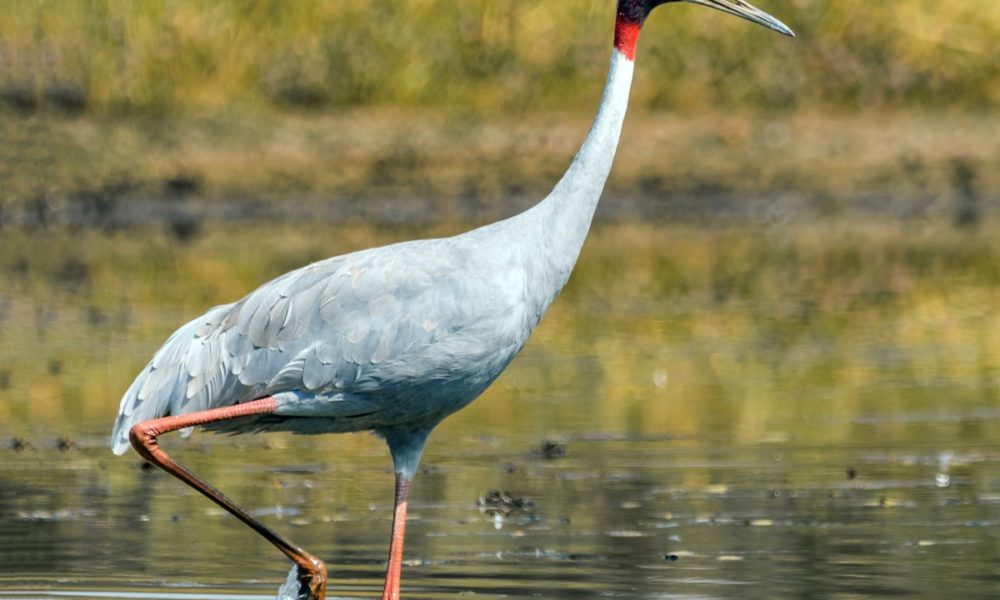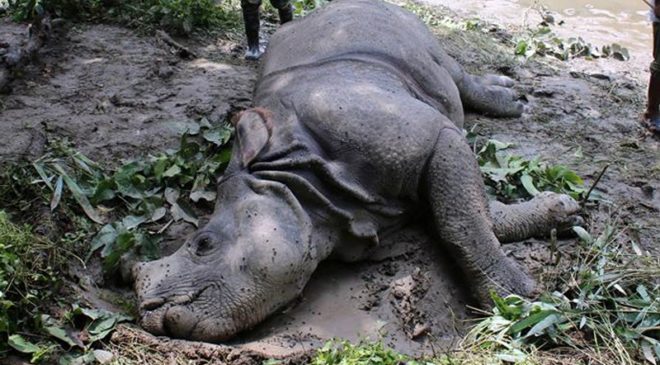January 28, KATHMANDU: The population of Sarus crane, a bird that lives in wetland areas, is in decreasing trend in Kanchanpur district as compared to the past.
The number of Sarus crane has started to decrease with shrinking wetland areas.
Ornithologists say loss of habitat is the main reason for the declining Sarus crane population every year. “The number of Sarus birds has started to drop after the local farmers began cultivation by encroaching on the wetlands. There is a shortage of food for these birds after the wetland area started to shrink.
They are also at risk of hunting and falling prey to the arbitrary use of pesticide in agriculture,” said ornithologist Hirulal Dagaura, who is associated with Bird Conservation Nepal.
According to him, the population of this bird has decreased almost by half compared to the past. He reasoned that this is because of the decline in fish, frog, snakes and other insects which the Sarus feeds on.
A waterbird census carried out recently counted only two Saruses at Chawanni wetland and eight at another wetland of Beldandi Rural Municipality in the district.
Locals said 15-20 Saruses could be seen at one place before. People kill Sarus for meat and eggs as well. Sarus are hunted during the monsoon season.
Conservationists and stakeholders see the need of conducting awareness-raising programs for the conservation of wetlands for protecting this endangered bird.
The National Parks and Wildlife Act, 1973, has listed the Sarus crane as a protected bird. It is included in Annex 2 of CITIES and in the ‘sensitive’ list of IUCN’s Red Book.
Sarus cranes hatch their chicks in June and July after farmers complete planting paddy saplings. Sarus crane hatch and rear chicks at safer places in wetland areas. They are also considered as social creatures and this bird lives in pairs.
The bird lays only two eggs during the breeding season, said ornithologist, Dagaura. The chicks live with their mothers for five-six months.
The birds are found in Rupandehi, Kapilvastu, Banke, Dang, Chitwan and Kalikich pond of Shuklaphanta National Park in Kanchanpur and Beldandi, the buffer zone of the park. It is estimated that there are around 10-15 Saurs cranes in Kanchanpur.
Onithologists put the number of this bird at 400-800 in Nepal. The bird is also found in Australia, Cambodia, China, India, Laos, Myanmar, Pakistan and Vietnam. There are 15 species of Sarus crane in the world and four in Nepal.
Laxman Sarus crane was seen in Kailali this year after two decades. As per the National Park and Wildlife Conservation Act-1973, those who kill rare birds, including Sarus crane, face from Rs 15,000 to Rs 30,000 fine, or three months imprisonment, or both.








